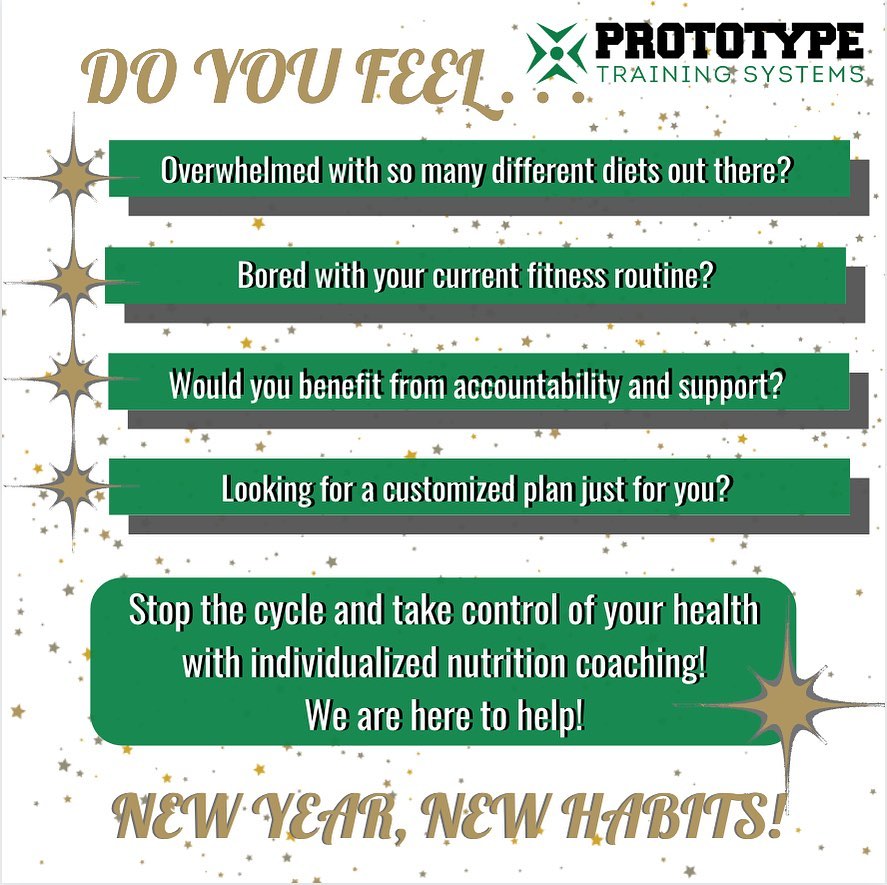2021: What’s Your Plan?
By: Mike Collette (Owner of Prototype Training Systems/CrossFit Prototype)

2020 may not have turned out the way you planned. Actually, I know it didn’t turn out the way you planned, no one could have planned for it!
As you know, there were a lot of things that were OUT of our control that impacted what we could do. The pandemic and shutdown prevented us from being with our loved ones or socially engaging face to face, the lack of fitness equipment made it hard to build out a home gym and many of us worked from home which meant more time sitting.
At the same time, there were a lot of things IN our control, that we may have convinced ourselves weren’t.
I hope that you made the most of 2020, but if you feel like you didn’t or that you wasted a year, have you given any thought to what’s going to be different in 2021?
As the New Year approaches, that means resolution time!
However, it’s widely understood that New Year’s resolutions don’t work (well, for the most part).
As a matter of fact, a study found that only 8% of people who make New Years Resolutions (NYR’s) follow through on them for the year, and nearly 80% of people de-commit to their NYR’s by February.
So if it’s not a New Years’ resolution that is going to change the course for you, will you make 2021 different?
Can you change your habits and commit to doing something for the long run to better yourself?
Can you get a little more uncomfortable and do more things that scare you?
Well, I’m here to tell you that you absolutely can AND I’m going to tell you what you should do BEFORE the New Year AND after the New Year to make 2021 and the rest of your life the absolute best!
Step 1: Don’t Wait For Motivation, ACT.
I’ve written about how to get motivated in the past and why you can change your goals, but the first step before anything is to take ACTION.
Most people think that they have to wait to get motivated to start doing something, but this isn’t how the motivation loop works. This is what people think this looks like:
Motivation–Action–More motivation
In reality, we need to take ACTION to get motivated vs. needing to get motivated to take action. This is what is should look like:
Action–Motivation–More Motivation
Do you think that Tiger Woods or LeBron James wake up every morning motivated to put the work in to become some of the greatest athletes of all time? Do you think Tom Brady waited for the motivation to be the winningest quarterback of all time?
Hell no! I bet you some days their alarm goes off at 3:30 am/4 am and they want to go back to sleep. But they get up and start. They take ACTION.
The best way to approach ACTION is to “Ramp Up” or take small steps. Most people don’t take ACTION because they are overwhelmed by the task (big project) or the long term goal (lose 50lbs).
Not motivated to workout today? Take it small and ramp-up to that overwhelming workout you don’t want to do. An example would be to put on your workout clothes or to just start doing some light stretching. Doing the first small steps in the sequence of actually working out will trigger your mind to follow through with the process.
Want to start waking up earlier? Say your target goal would be a 5 am wake up time but you’re used to sleeping past 7 am every day. Start by waking up for a week at 6:30 am, then gradually ramp up (or ramp down in this case!) to your target time.
Step 2: Build on Existing Habits
At Prototype Training Systems/CrossFit Prototype, we have talked to our members A LOT about the importance of habits and the strategies to build some really strong ones.
But before we build completely NEW HABITS, what we want to do is enhance or build on some habits we have already created.
What we tend to forget is that we have ingrained 100’s of small habits into our daily life already. If you already have some, why not you build on them?
Do you want to get more exercise? The goal of “getting more exercise” needs to be more specific and measurable, but the idea of that can be overwhelming. First, we would want to identify a more realistic (SMART tested) version of this that we can incorporate into a habit we already have.
Let’s say you already walk 3 times a week for 20 minutes. The target would be to build on this existing habit, gradually. Start by adding 10 more minutes to your walk for 2 weeks and progress from there. Here you are building on an existing habit.
Do you want to lose 50lbs? This is more quantifiable than “get more exercise” but can still be overwhelming. Let’s say you eat 3 meals a day (you may be eating more than you should, but that’s not the primary focus right now), the first step of building on this habit is to add a vegetable or fruit to every meal, every day.
Step 3: Establish an Accountability System
We naturally hate disappointing people or letting others down. It’s natural and it’s what makes us human. Whether you have a fear of disappointing others (this includes yourself!) or you have a history of doing this in the past, in order to be successful with any goal, you need to be held accountable.
Self-accountability (internal accountability) is the most important component of your accountability system. If you can’t hold yourself accountable (even a little bit), it’s going to be really challenging for others to help you.
An example of a self-accountability system would be using a checklist that is visible to remind you of the goals/tasks you want to accomplish. This needs to be somewhere out in the open to keep your priorities top of mind and you need to manually check these items off the list each day to show you’ve accomplished what you set out to do. In summary, you need to write out your goals/habits/things you want to accomplish, to establish commitment.
Third-Party Accountability (external accountability) should be the next layer to your accountability system. Third-Party Accountability (I like to call them account-a-bil-i-buddies) are those people close to you or someone you hire to hold you accountable to the goals that you set. An example here would be a coach or a trainer who is holding you accountable to your fitness goal. Yes, they are there to prescribe the plan and create the map to help you be successful, but they are also there to make sure you’re doing what you need to do when they’re not there.
Another option here would be a workout partner (a friend, spouse, family member) that you have shared interests (goals) with that will “pick you up” when you’re not motivated (ACTION!). They’re there and expect you to show up, you’ve committed and need to follow through!
A strategy to never disappoint your account-a-bil-i-buddy is to utilize a commitment device. An example of a commitment device is booking your workouts with your coach/trainer/friend ahead of time. This creates another layer of commitment and increases your likelihood of follow-through. Non-committal language or actions tends to work against your goals and what you’re trying to accomplish.

So what habits are you looking to change? What goals do you have? Do you feel like you don’t even know where to start?
If that’s the case, let us help you! Our process is simple: Meet with a Coach to discuss where you want to go and we will create the map for you. Our prescriptive model at Prototype allows us to tailor a program to what you need and what you want. Whether that’s personal training, CrossFit, nutrition coaching (working with a Nutritionist or Registered Dietician), or a blend of these services.
If you want 2021 to look different, take action, build onto habits, and create an accountability system! If you need help, we’d love to connect!
Click this link to book a FREE Goal Review Session with us!
